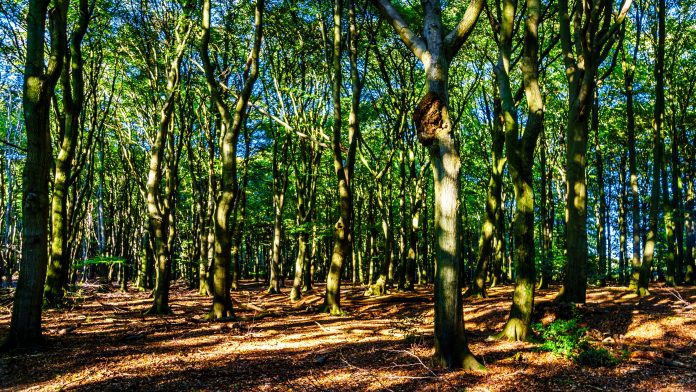Research suggests that climate scientists should re-consider the role of Indigenous communities in land management
In their rush to promote the importance of climate change as an ecological driver, climate scientists increasingly are ignoring the profound role that Indigenous peoples played in fire and vegetation dynamics, not only in the Eastern United States but worldwide.
Marc Abrams, professor of forest ecology and physiology at Penn State, said:
“In many locations, evidence shows that indigenous peoples actively managed vast areas and were skilled stewards of the land.
“The historical record is clear, showing that for thousands of years indigenous peoples set frequent fires to manage forests to produce more food for themselves and the wildlife that they hunted, and practiced extensive agriculture.”
The impact of pollution for Indigenous peoples
In a piece of separate research by the University of Helsinki, a review of 680 different publications highlighted broad patterns of all the documented impacts of environmental pollution among Indigenous groups from all inhabited continents.
The authors found out that most pollution-related health impacts documented among Indigenous Peoples are mediated through the consumption of polluted water and food, including wild foods obtained through hunting, fishing, and gathering.
Dr. Álvaro Fernández-Llamazares, from the Faculty of Biological and Environmental Sciences, who led the study said:
“All the literature reviewed provides clear evidence that Indigenous Peoples are largely and heavily affected by polluting activities both through their exposure and vulnerability, and that much of this pollution is linked to broader patterns of colonization.
“However, we also note that, all over the world, Indigenous Peoples are developing innovative strategies to limit, abate or stop ongoing pollution and fighting to prevent it from the outset”.
Pollution can result in fear of consuming traditional wild foods and foster increased reliance on nutrient poor and expensive market foods, often increasing the risk of malnutrition and chronic diseases.
What about land management in the US?
Responding to an article published earlier this year in a top scientific journal that claimed fires set by Native Americans were rare in southern New England and Long Island, New York, and played minor ecological roles, Abrams said there is significant evidence to the contrary.

In an article published in Nature Sustainability, Abrams, who has been studying the historical use of fire in eastern U.S. forests for nearly four decades, refutes those contentions.
He said:
“The palaeoecological view — based on a science of analyzing pollen and charcoal in lake sediments — that has arisen over the last few decades, contending that anthropogenic fires were rare and mostly climate-driven, contradicts the proud legacy and heritage of land use by indigenous peoples, worldwide.”
In his article, Abrams, the Nancy and John Steimer Professor of Agricultural Sciences in the College of Agricultural Sciences, argues that the authors of the previous paper assumed that the scarcity of charcoal indicated that there had not been burning. But frequent, low-intensity fires do not create the amount of charcoal that intense, crown-level, forest-consuming wildfires do, he pointed out.
“Surface fires set by indigenous people in oak and pine forests, which dominate southern New England, often produced insufficient charcoal to be noticed in the sediment,” said Abrams. “The authors of the earlier article did not consider charcoal types, which distinguish between crown and surface fires, and charcoal size — macro versus micro — to differentiate local versus regional fires.”
Activity of Indigenous people erased by lightning?
Also, lightning in New England could not account for the ignition of so many fires, Abrams argues. In southern New England, lightning-strike density is low and normally is associated with rain events.
“The region lacks dry lightning needed to sustain large fires,” he said. “Moreover, lightning storms largely are restricted to the summer when humidity is high and vegetation flammability is low, making them an unlikely ignition source.”
Early explorers and colonists of southern New England routinely described open, park-like forests and witnessed, firsthand, Native American vegetation management, Abrams writes in his article, adding that oral history and numerous anthropological studies indicate long-term burning and land-use for thousands of years by Indigenous people.
Burning near Native American villages and along their extensive trail systems constitutes large land areas, and fires would have kept burning as long as fuel, weather and terrain allowed, he explained. Following European settlement, these open oak and pine woodlands increasingly became closed by trees that previously were held in check by frequent fire.
The authors of the previous paper also argued that fire should not be used as a present-day management tool, a view that Abrams does not support.
The role of anthropogenic fires is front and centre in the long-running climate-disturbance debate, according to Abrams, who notes that fires increased with the rise of human populations. The world would be a very different place without those fires, he contends.
Abrams further commented:
“Surprisingly, the importance of indigenous peoples burning in vegetation-fire dynamics is increasingly downplayed among paleoecologists.
“In oak-pine forests of southern New England, Native American populations were high enough, lighting-caused fires rare enough, vegetation flammable enough and the benefits of burning and agriculture great enough for us to have confidence in the importance of historic human land management.”
Fernández-Llamazares, University of Helsinki, further commented about the role of Indigenous land management:
“During my time in the field, I have been confronted with the tragic reality of the destruction of the largest standing tropical rainforests of our planet. For example, Amazonia often seemed to me like a grand chessboard where the fate of our world is being written.”











